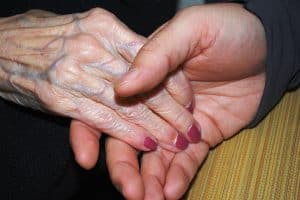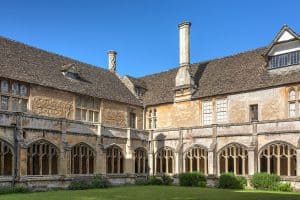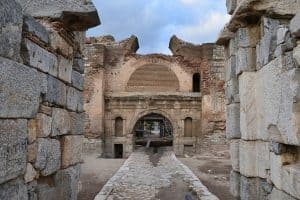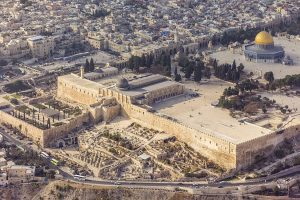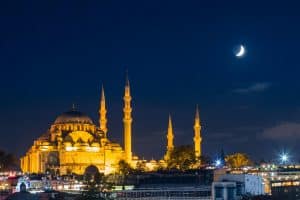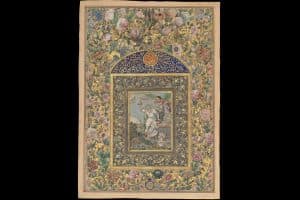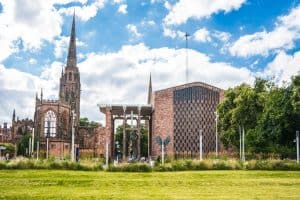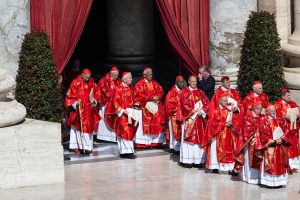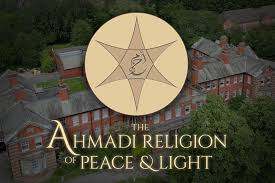By Sarah Harvey
The fast-growing Church of Jesus Christ of Latter-Day Saints, more commonly known as the Mormons, is a Christian-based religion. It was founded in the United States in the 19th century and is known for its door-to-door missionaries
How did the church begin?
The Church of Jesus Christ of Latter-Day Saints was founded by Joseph Smith (1805-44) in New York State in 1830. This era is often referred to as the Second Great Awakening, a Protestant religious revival, in which preachers — including Smith — called for the restoration of Christianity, which they saw as corrupt.
According to Smith’s account, he was visited in the 1820s by an angel called Moroni, who revealed to him the location of a new revelation from God, called the Book of Mormon. It was discovered by Smith in the form of gold plates or tablets, buried near his family farm in New York State.
The Book of Mormon includes stories about the ancient peoples of the North American continent, who had travelled there from Israel, as recorded by the prophet Mormon and his son, the angel Moroni. It claims that Jesus visited the Americas after his resurrection. Smith said it was written in a new language which he alone could translate, and as he gradually converted the texts into English they revealed the structure of a new religious movement which he then established.
Gradually Smith gathered a group of followers, often by converting people who were already interested in restorationist versions of Christianity, and tried to settle the nascent church in several towns.
Smith said he was commanded by God to institute “plural marriage”, allowing men to marry more than one woman. It was practised by few, but members were persecuted and hounded out of places where they settled, including Kirtland, Ohio; Jackson, Missouri; and Nauvoo, Illinois.
In 1844 Smith and his brother Hyrum were charged with riot and treason and were shot dead by a mob while being held in an Illinois jail awaiting trial.
Leadership passed to Brigham Young (1801-77), who led the congregation to Salt Lake City, Utah. There, in the more sparsely populated American West, the church prospered and put down roots. However, as it grew it regularly came into conflict with the federal government, especially over the practice of polygamy. This was eventually resolved after decades of legal threats in the 1890 when the church officially renounced plural marriage.
Mormons or Latter-Day Saints?
The church teaches that Zion, or the New Jerusalem, will be built on the American continent and that Jesus will reign there, a “literal gathering of Israel”. Jesus’s return is expected, although no dates have been set for this. Believing that we are living in the “latter days” of human history, members see themselves as the “latter-day saints”, who will be saved in the millennial Kingdom of Jesus on earth, together with honourable people of other faiths.
The church is often called the Mormon Church and its followers Mormons, after the church’s text, the Book of Mormon. However, the church and its members do not use this term themselves — particularly after the 2018 edict by Russell M. Nelson, the church president, that it should be referred to only by its full and proper name: Church of Jesus Christ of Latter-Day Saints.
The Bible is also believed to be the word of God and forms part of the scriptural canon, along with their own distinct texts: the Book of Mormon, the Pearl of Great Price and Doctrine and Covenants.
What do followers believe?
The church follows 13 articles of faith, the first of which states that members believe in God the Father, his son Jesus Christ, and the Holy Ghost. However, the church is non-Trinitarian: they are understood as three separate beings.
Salvation — or individual exaltation — requires repentance of one’s own sins (not original sin), baptism through immersion, confirmation and receiving the gift of the Holy Ghost, through the laying on of hands.
Members believe in three realms of existence: the premortal, mortal, and postmortal world. Souls move from the premortal, through mortal existence, into the spirit world, then to a resurrected state. Hence they live with God before and after their time on earth — life is an intermediate stage of trial and improvement. The postmortal world is comprised of three “kingdoms of glory”: celestial, terrestrial, and telestial.
Exaltation, or eternal life, is salvation in the Celestial Kingdom. This is a doctrine of human theosis; humans can become as God, if they choose to fulfil God’s plan.
God’s plan is seen as working through the family unit. Human beings, in marriage, partner with God to provide a mortal experience for God’s children. This is why members tend to have larger-than-average families.
The spirit world is believed to have a physical existence: families live together for ever there, so long as their relationships were sealed in the temple (see practices below).
The “Word of Wisdom” is a health code included in Doctrine and Covenants that is followed by members. It mandates moderation in diet and abstinence from alcohol, tobacco, tea and coffee.
It is believed that Independence, Missouri, will be the site of the New Jerusalem when Jesus returns, according to the Encyclopaedia of Mormonism.
Smith — and subsequent presidents — are considered prophets in the church and as literal spokesmen for God. Women cannot be presidents or enter the priesthood. But it is believed that women received ‘priestly authority’ to fulfil leadership roles in the church.
There are two types of priesthood in the church: Aaronic, a form of preparatory priesthood given to new converts and boys age 12-18; and Melchizedek, a higher level of priests who can perform the sacred ordinances.
Members prepare for the return of Jesus by following scripture, spreading scripture worldwide through evangelism and following the example of Christ in their daily lives.
The church claims to have 16.5 million members worldwide in 2020. It is said to be the fifth-largest denomination in America and has spread through both proselytisation and high birth rates. It is growing particularly in Africa and South America.
How do members practise their faith?
There are two main types of ordinances (rituals) performed in the church. Those necessary for exaltation (salvation), also called saving ordinances. These include:
- Baptism
- Confirmation
- Conferral of the Melchizedek priesthood (for men only)
- Temple endowment
- Temple marriage
There are also ordinances for “guidance and comfort”, including:
- Naming and blessing of children
- Administering to the sick
- Various types of blessings
- The dedication of graves
Temple endowment and marriage are the most significant ordinances, necessary for eternal life. Endowment is an initiation ceremony in which members make pledges called covenants affirming those made in baptism. The ceremony is preceded with washing and anointing, and afterwards, members receive their white temple undergarments.
Temple marriage is a ritual that “seals” in heaven relationships formed on earth, principally a man and a woman in marriage, all children born and unborn, and any they adopt, for eternity.
“Proxy ordinances” can also be performed on behalf of members’ dead ancestors, thus offering them the chance of salvation and the opportunity to be sealed in the family unit in the spirit world. The church provides genealogy services for this reason but also for the public.
Sunday is the Sabbath day for the church and members attend the sacrament meeting. Baptised members receive bread and water in remembrance of the Last Supper. Sunday services take place in churches, not temples. The services and churches are open to the public; temples are not.
Christmas and Easter are also celebrated by the church. In Utah, 24 July is celebrated as Pioneer Day, the day that Brigham Young and his followers arrived in Utah in 1847.
The singing of hymns is an important form of religious expression and worship in the church. Members sing many traditional Christian hymns, but also have a strong repository of their own hymns. The Tabernacle Choir at Temple Square (previously called the Mormon Tabernacle Choir) is world-famous.
The church is well known for its proselytising practices. All male members are expected to undertake a period of missionary activity, for two years from the age of 18. Female members can also participate if they want to, from the age of 19. This is often undertaken abroad and at the member’s own expense. Retired couples are also encouraged to undertake such work.
Members tithe 10 per cent of their income to the church. The church also has many welfare, humanitarian and education organisations, such as the Relief Society, which was founded by female members of the church, and is led and participated in by them.
Controversies
The church is known for the historical practice of polygamy or “plural marriage”. In 1838, Joseph Smith said he was commanded by God to institute polygamy, allowing men to marry more than one woman. It was practised by few, but it was controversial and accounted for some of the persecution they suffered. The practice was banned by the fourth prophet and president, Wilford Woodruff (1807-98), in 1890.
A number of schismatic groups emerged after polygamy was outlawed in 1890s, such as the Fundamentalist Latter-Day Saints. They are concentrated in the twin cities of Hildale, Utah, and Colorado City, Arizona (known collectively as “Short Creek”). They were excommunicated in 1935 from the mainstream church, which deems them to be apostates.
The Fundamentalist Latter-Day Saints became well known after their Yearning for Zion Ranch, near Eldorado, Texas, was raided by the state in 2008, and confiscated by Texas officials in 2014. Leader Warren Jeffs and about a dozen other senior men were jailed on sexual abuse and fraud charges. Other schismatic movements that still practise polygamy are the Kingston Clan and the Bountiful community, led by the Blackmores.
Among schismatic groups, there are also some connections to the American militia movement. Cliven Bundy and his family, who initiated armed standoffs with federal agents in Nevada in 2014 and Oregon in 2016, were members of the church.
Some critics see the church as on a quest for religious and political supremacy, especially in the United States. The church rejects the claims. In 2012, Mitt Romney, the Republican US presidential candidate, and Latter-Day Saint, had to reassure voters that he would not be ruled by his faith.
American evangelicals continue to have an ambivalent relationship with the Church of Jesus Christ of Latter-Day Saints, seeing some of its teachings as non-Christian.
The church is officially neutral in politics. Its members tends to be socially and politically conservative, although the first member of the church elected to the UK Parliament was Labour. Black priests were not permitted until 1978 and women still cannot be priests within the movement.
Same-sex relationships are officially prohibited within the church although LGBT members’ groups can be found online.
Dr Sarah Harvey is senior research officer at Inform, an independent, educational charity based at King’s College London, which provides information about minority religious, spiritual and political movements
Useful links
The Church of Jesus Christ of Latter-Day Saints main website
The UK website
World Religions and Spirituality page
Pew Research Center
RE:Online
Centre for the Critical Study of Apocalyptic and Millenarian Movements
Academic experts
Professor Douglas Davies, Durham University
Dr Adam Powell, Durham University
Rodney Stark, distinguished professor of the social sciences, Baylor University, Texas
Dr James Holt, associate professor of religious education, Chester University, specialising in RE and Mormon theology
Further reading
Abanes, Richard. 2002. One Nation Under Gods: A History of the Mormon Church. New York: Four Walls Eight Windows.
Davies, Douglas J. 2003. An Introduction to Mormonism. Cambridge, UK: Cambridge University Press.
Givens, Terryl L. 2003. By the Hand of Mormon: The American Scripture that Launched a New World Religion. New York: Oxford University Press.
Givens, Terryl L. 2009. The Book of Mormon: A Very Short Introduction. New York: Oxford University Press.
Gutjahr, P. C. 2012. The Book of Mormon: A Biography. Princeton: Princeton University Press.
Hammarberg, M. 2013. The Mormon Quest for Glory: The Religious World of the Latter-Day Saints. Cary: Oxford University Press.
Riess, Jana. 2019. The Next Mormons: How Millennials are Changing the LDS Church. New York: Oxford University Press.
Shepherd, Gordon and Gary Shepherd. 1984. A Kingdom Transformed: Themes in the Development of Mormonism. Salt Lake City: University of Utah Press.
Shipps, Jan. 1985. Mormonism: The Story of a New Religious Tradition. Urbana: University of Illinois Press.
Stark, Rodney. 2005. The Rise of Mormonism. New York: Columbia University Press (edited by Reid L. Neilson).





